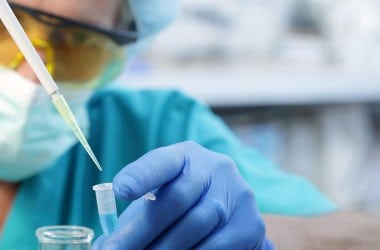Description
Phlebotomy Training Program

Delegates will acquire skills in phlebotomy beginning with ethical behavior to maintain professional appearance to relieve patient anxiety and maintain patient confidentiality, progressing to the practice of vein and capillary puncture procedures using a variety of methods and equipment including vacutainer system, microcollection devices, winged infusion set and syringe.
Topics Covered:
- A Brief History of Phlebotomy
- Professionalism
- Terminology and Abbreviations
- Health Care Settings
- Legal and Regular Issues
- Review of General Rules for Infection Prevention and Safety
- Review of How the Heart and Circulation Work
- The Blood Collection System
- Procedure for a Routine Venipuncture
- Procedure for Skin Puncture
- Special Situations in Phlebotomy
- Special Collection Techniques
- Drawing Blood Donor Units
- Specimen Collection Other Than Blood
- Training on Artificial Arm
- Training on Real Phlebotomy
- Training Vacutainer Distribution 1
- Training Vacutainer Distribution 2
Course Outcome:
Upon completion of this course, the Candidate should be able to:
-
Identify the importance of phlebotomy procedures to the overall care of the patients.
-
List professional competencies for phlebotomists.
-
Participate in quality improvement activities.
-
Perform active listening and effective communication with patients.
-
Explain the proper techniques for hand washing, gowning, gloving and masking.
-
Identify the various supplies that should be carried on a specimen collection tray when a skin puncture specimen must be collected.
-
Describe the process and time limits for applying a tourniquet to a patient’s arm.
-
Locate and name of the veins most commonly used for phlebotomy.
-
Identify the most appropriate sites for venipuncture and situations when these sites might not be acceptable. Identify alternative sites for venipuncture procedure.
-
List the various types of anticoagulant used in blood collection, their mechanisms for preventing blood clotting and the vaccum collection tube color codes for these anticoagulants.
-
Describe the anticoagulant order of drawing for collection tubes.
-
Describe the decontamination process and the agents used to decontaminate skin for routine blood tests and blood cultures.
-
Explain the importance for collecting “timed specimen” at the requested times.
-
Prevent and handle preanalytical complications related to phlebotomy procedures.
-
Describe special collection techniques, draw blood donor units and perform specimen collection other blood.
-
Describe guidelines for maintaining privacy and confidentiality.
-
Describe methods commonly used to transport specimens.
Course Duration:
18 Hours – Weekend Course






